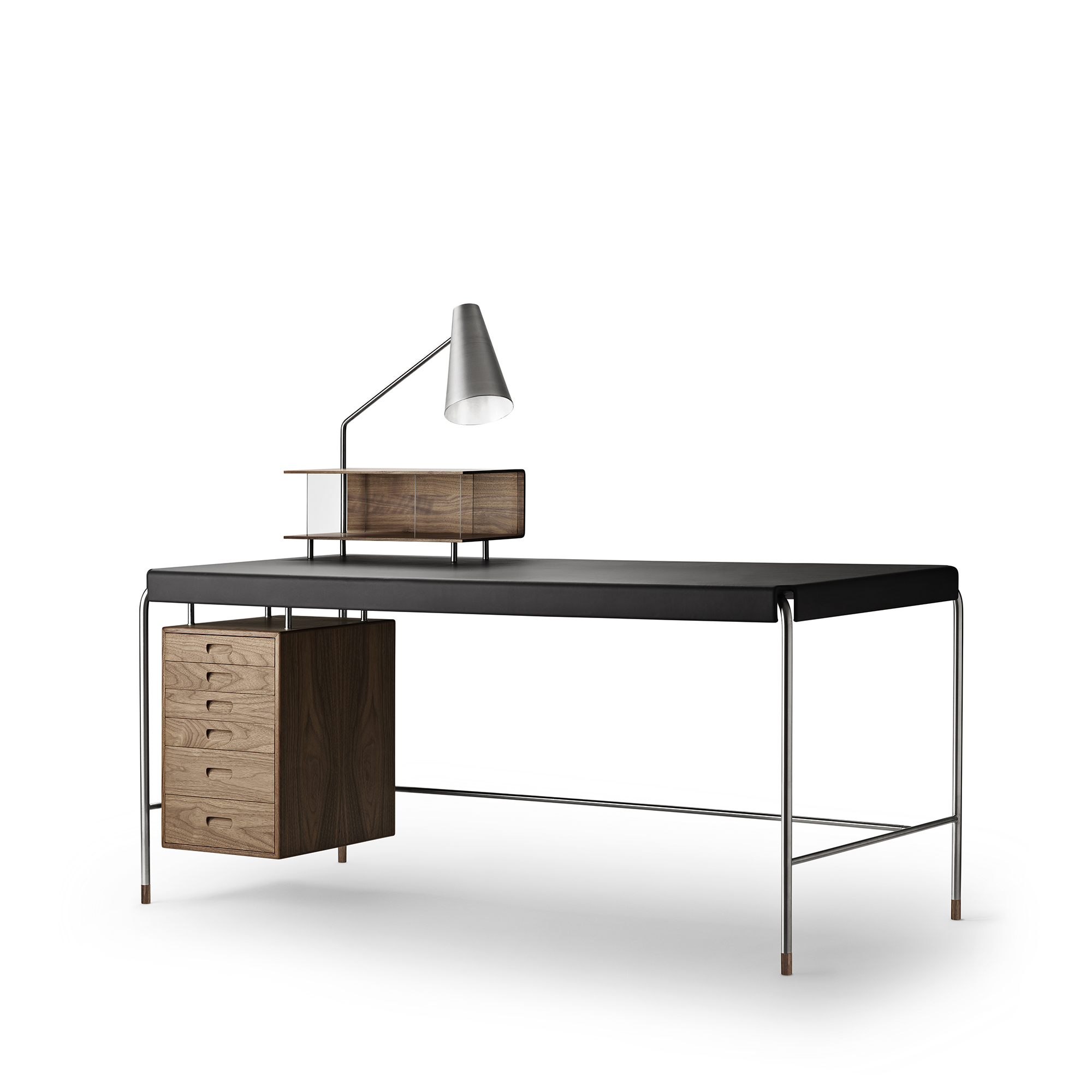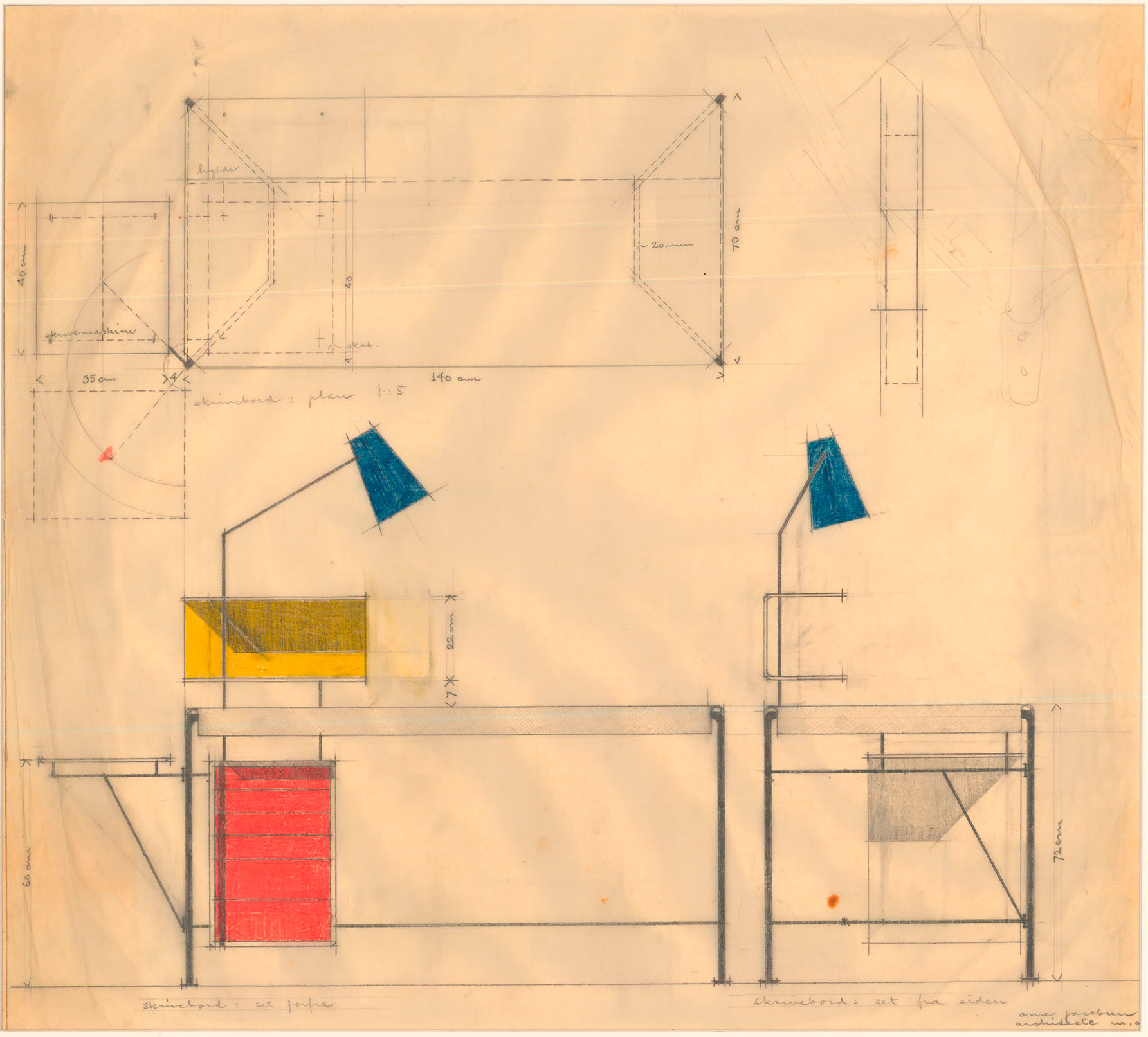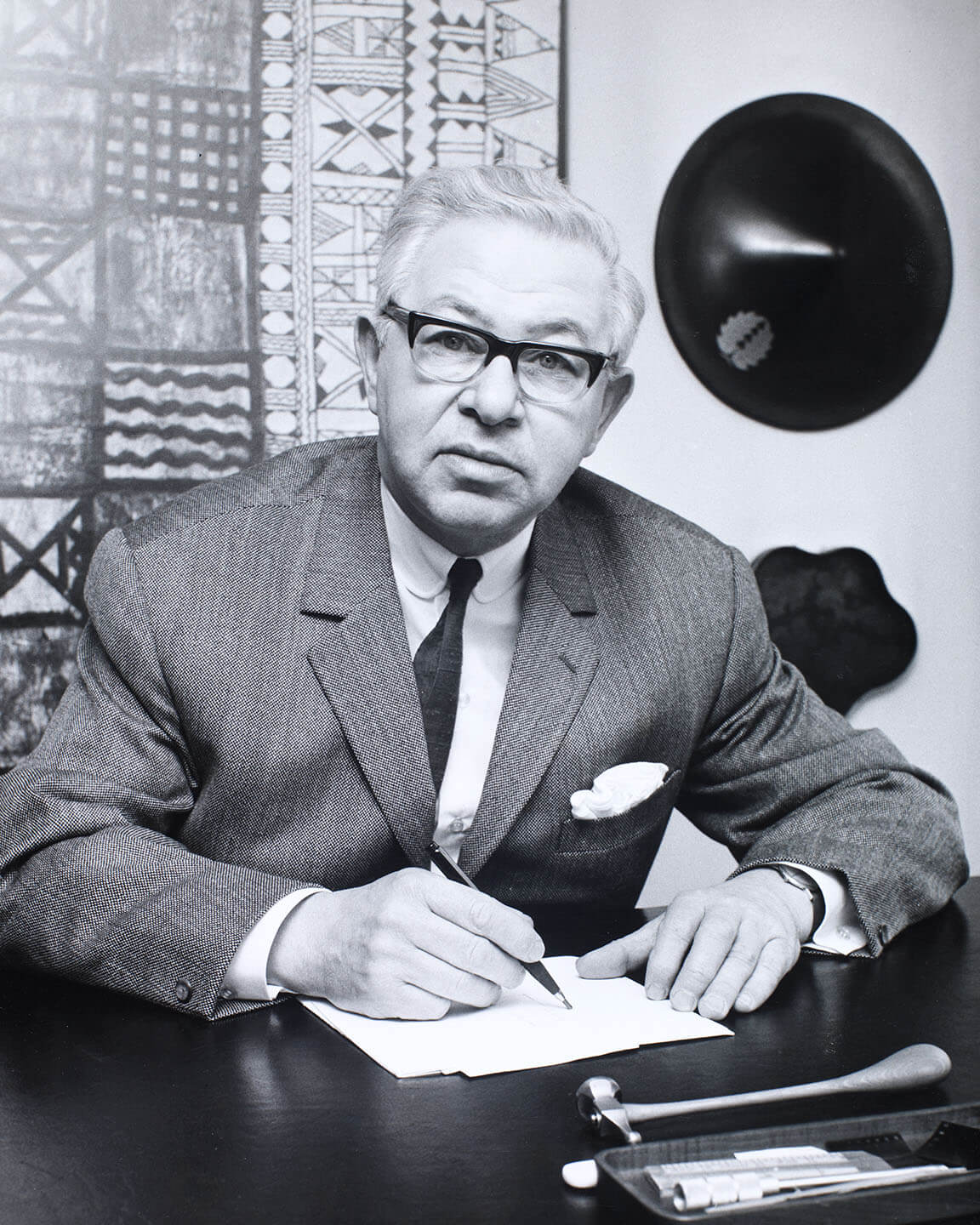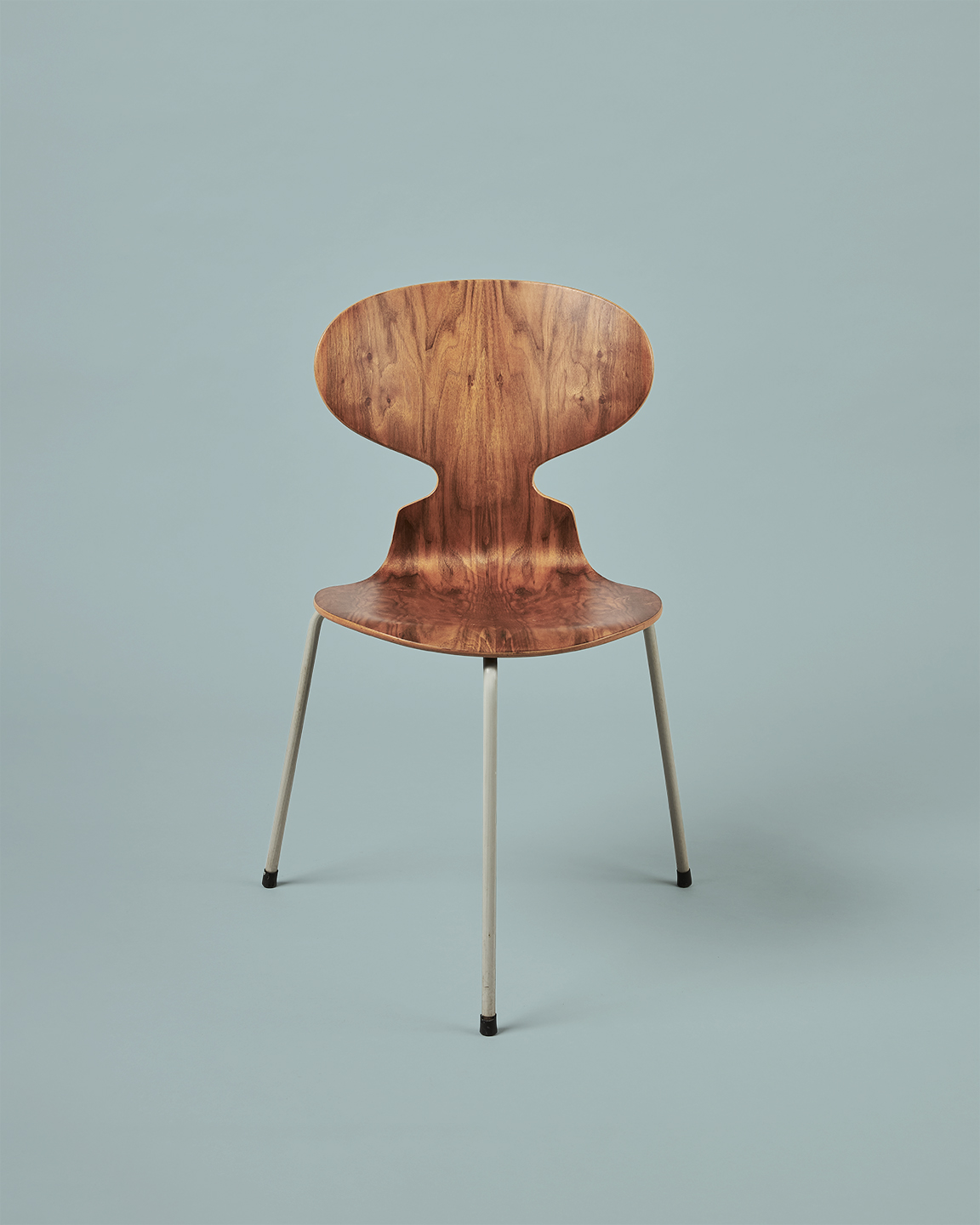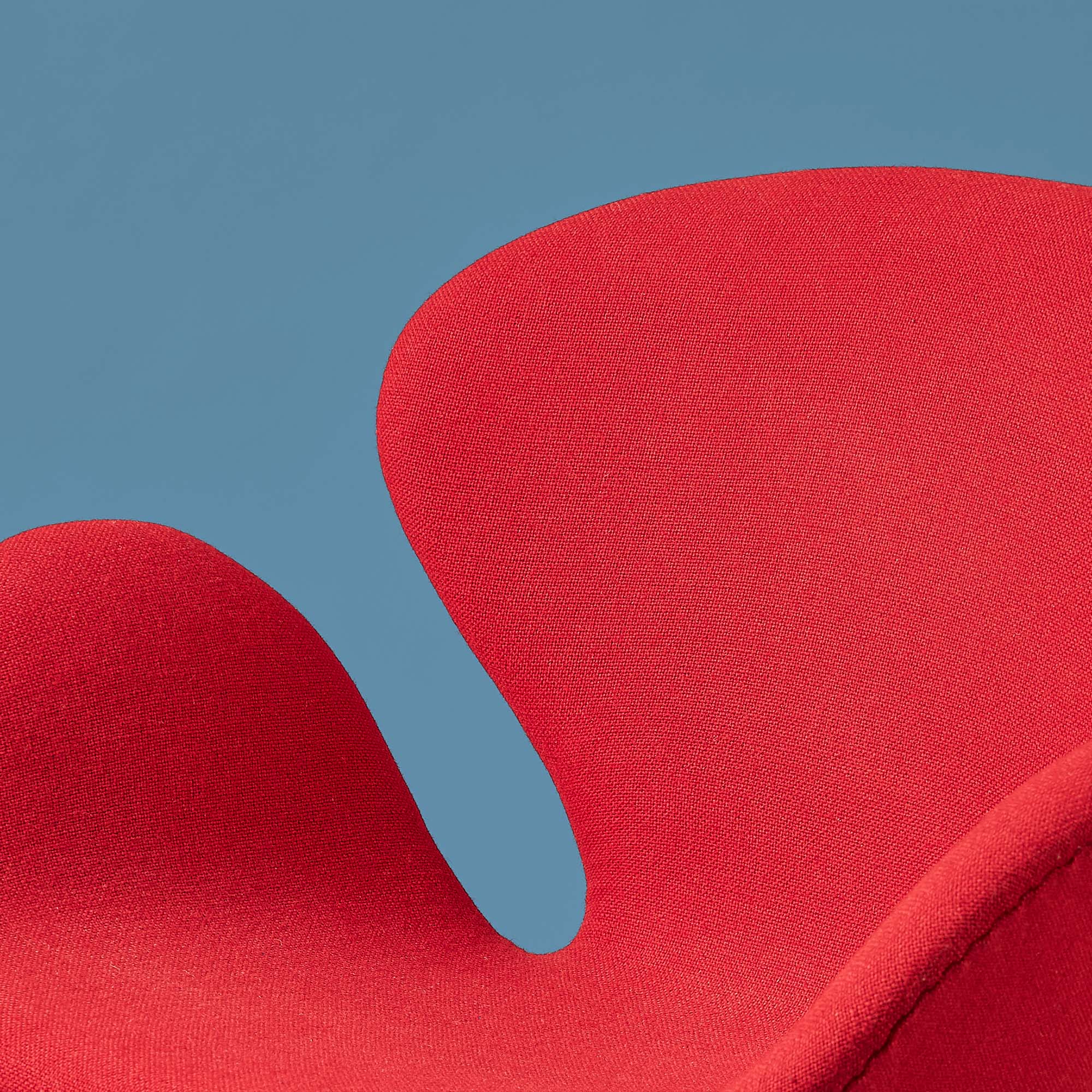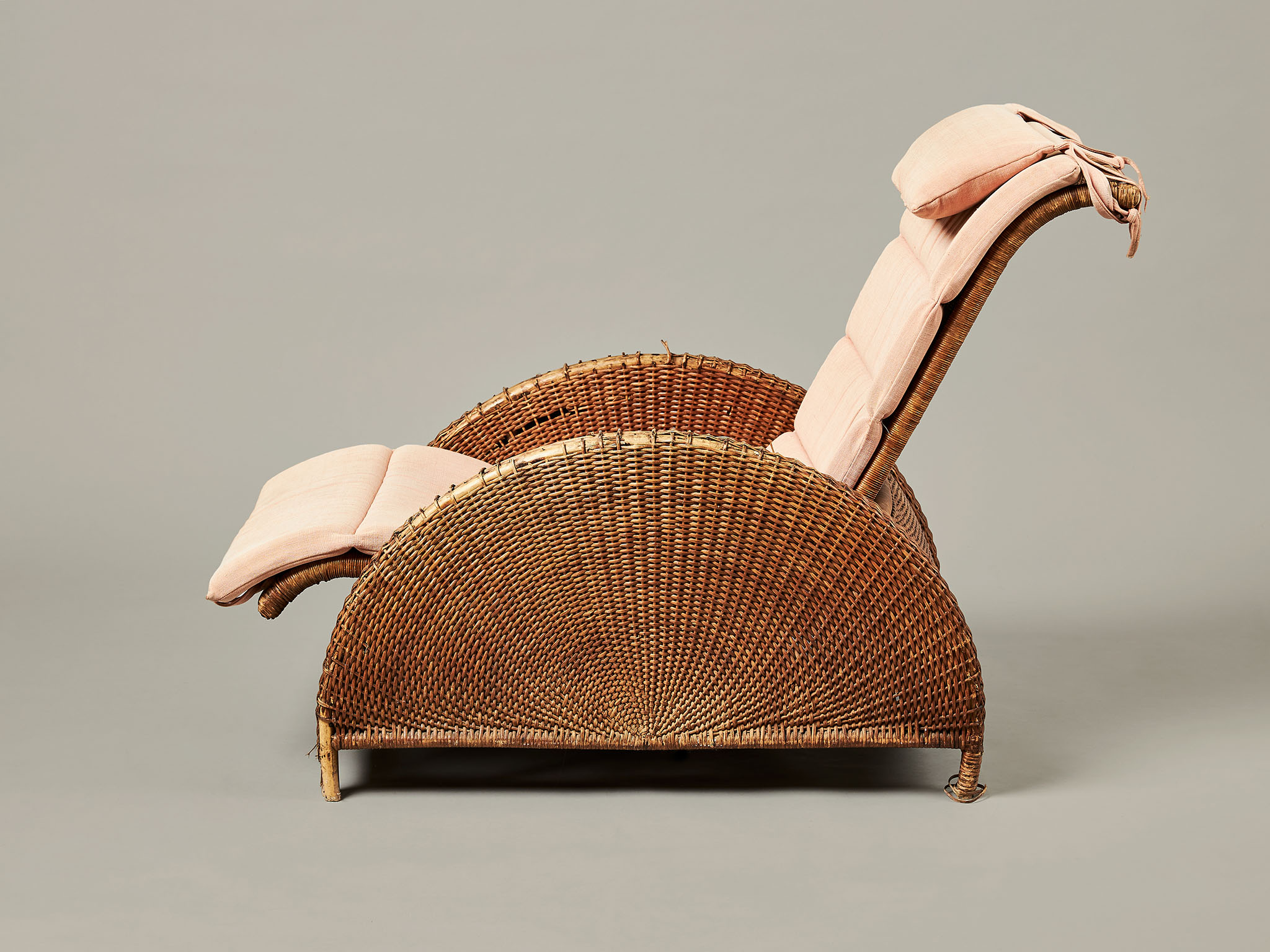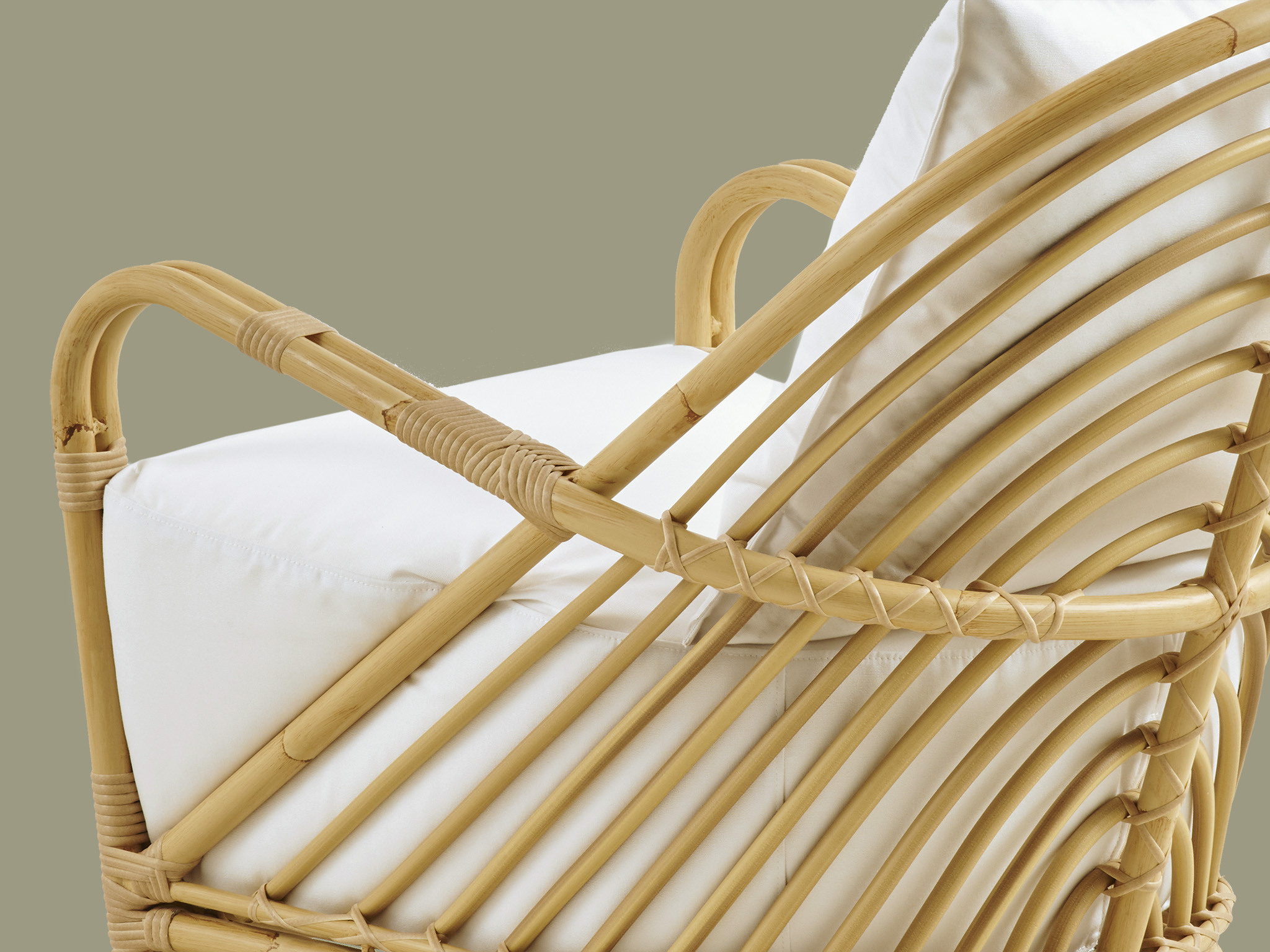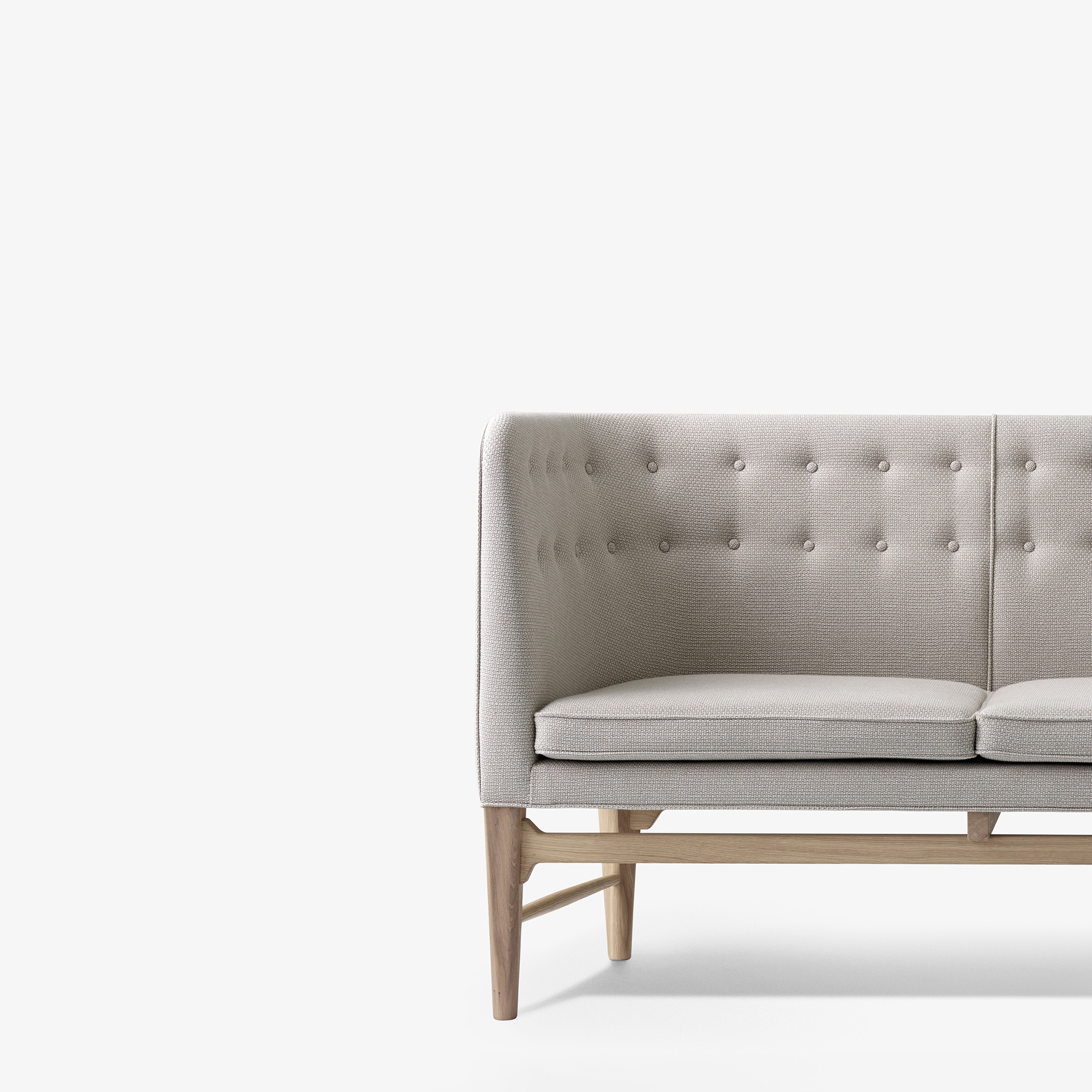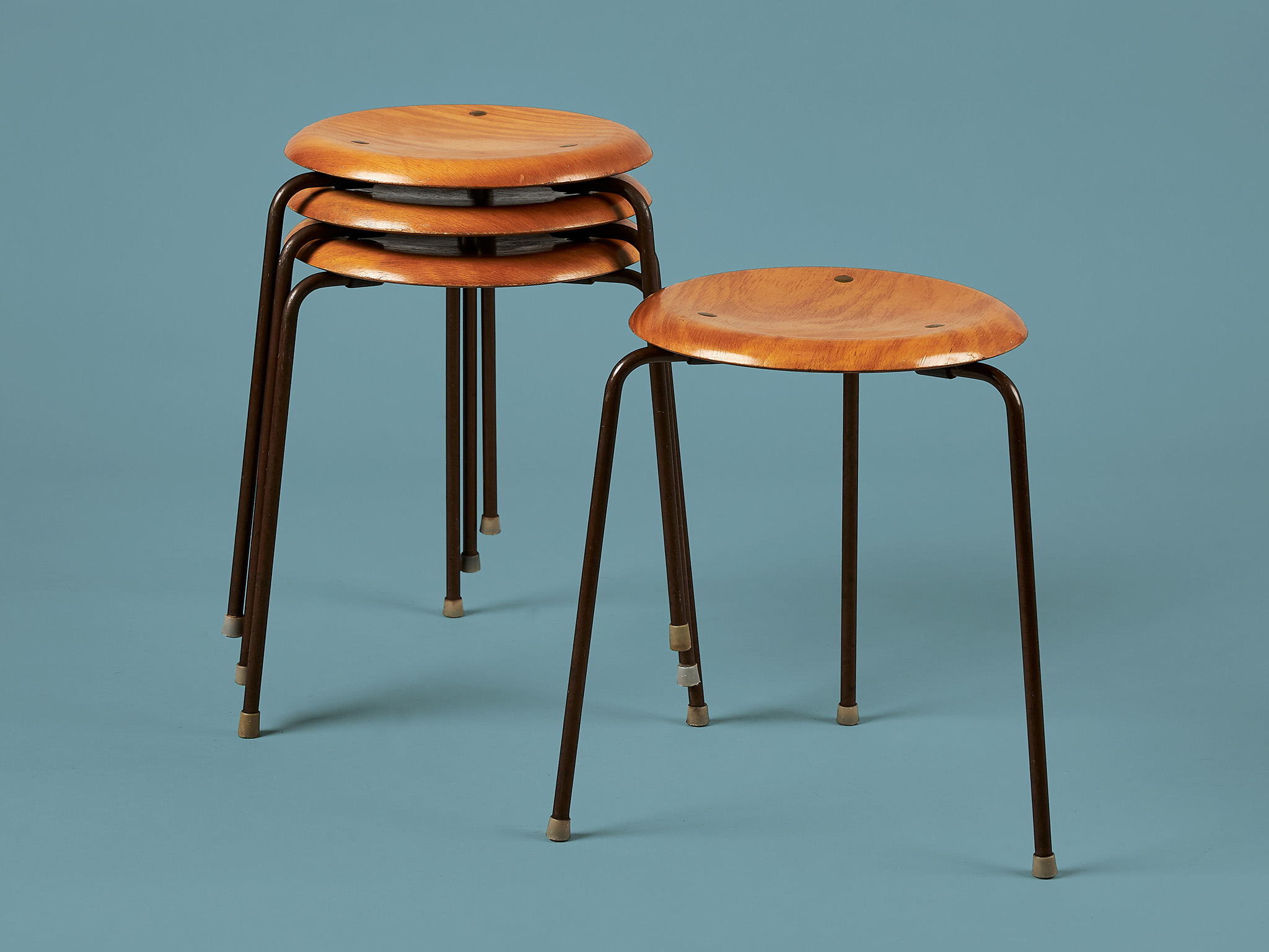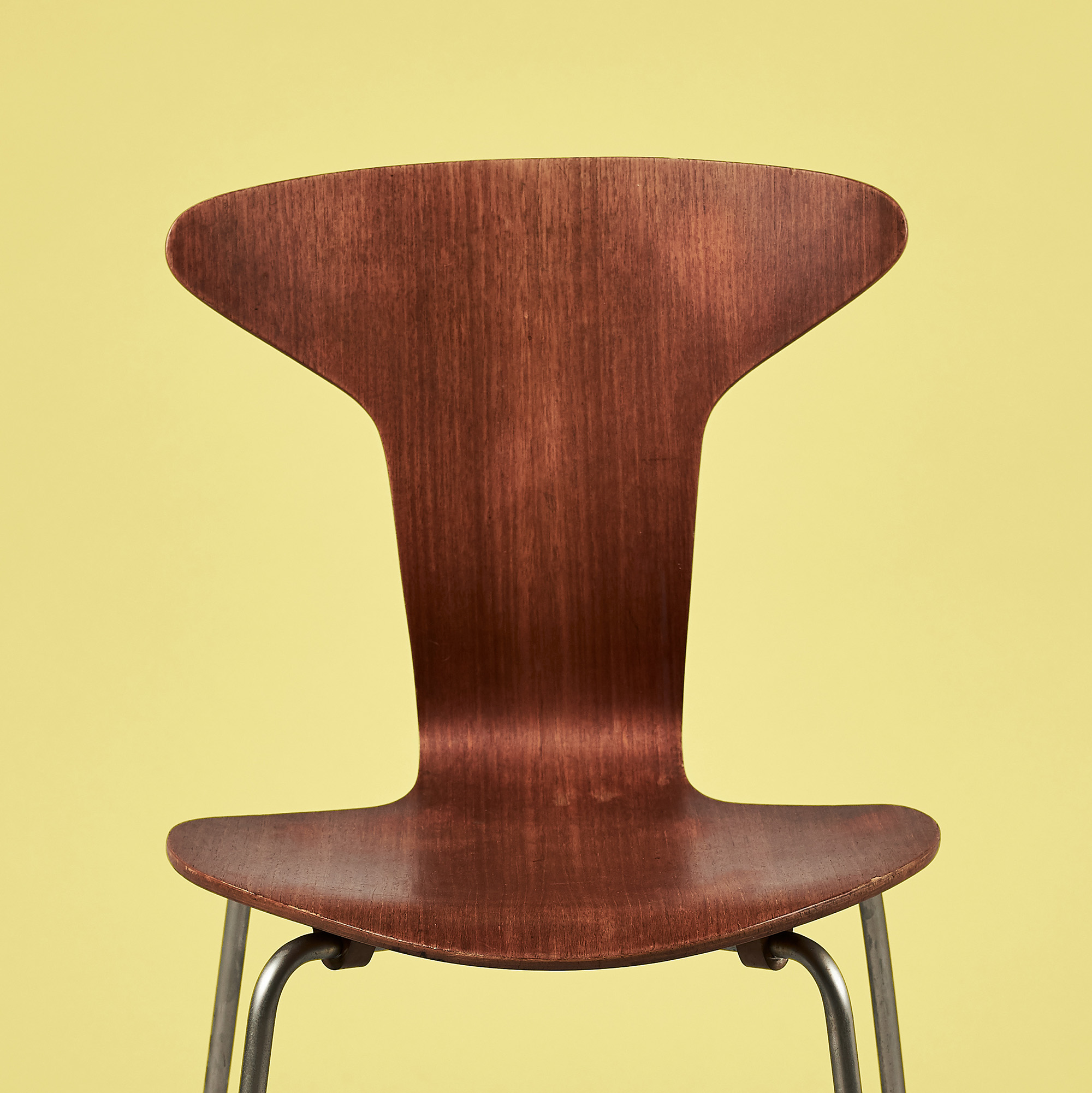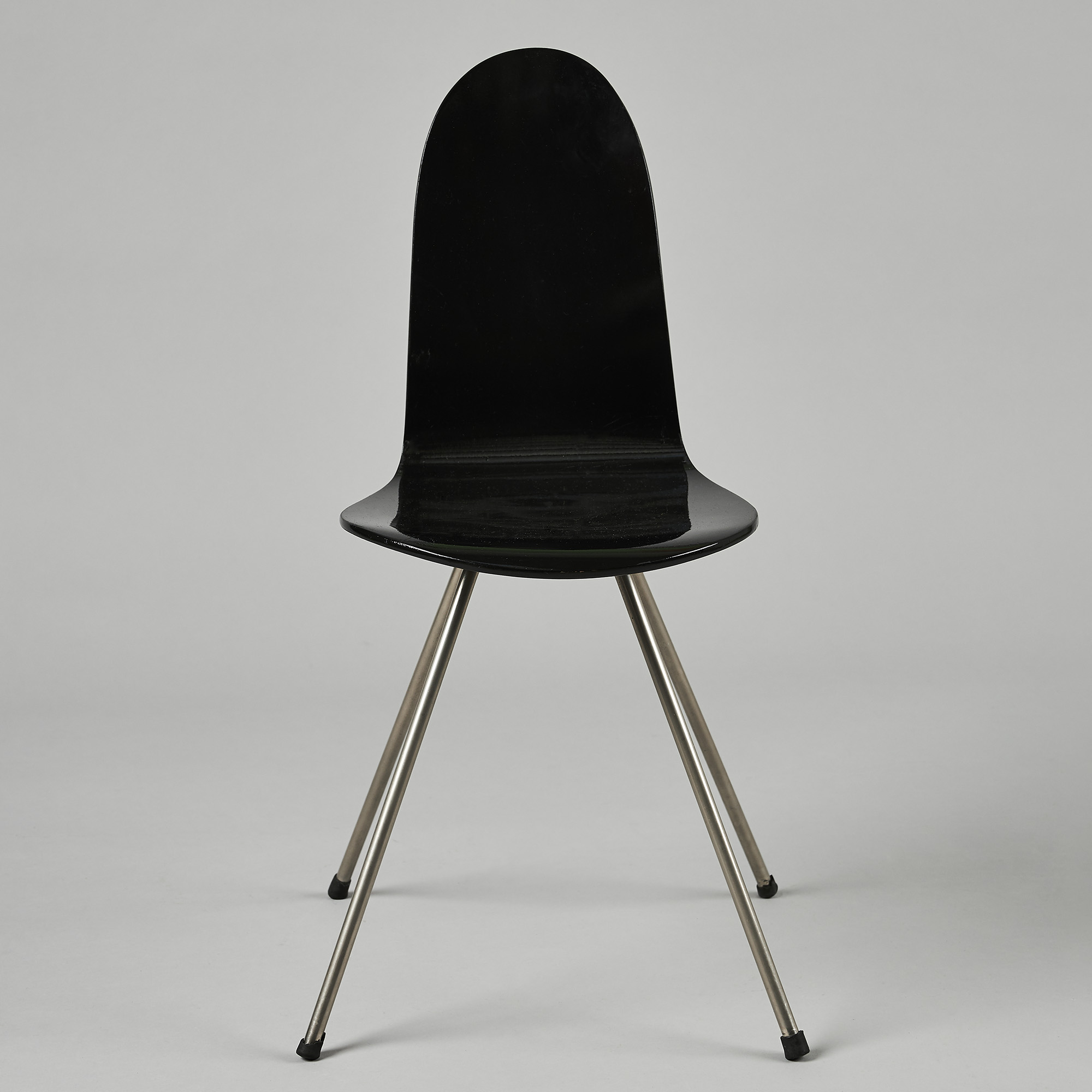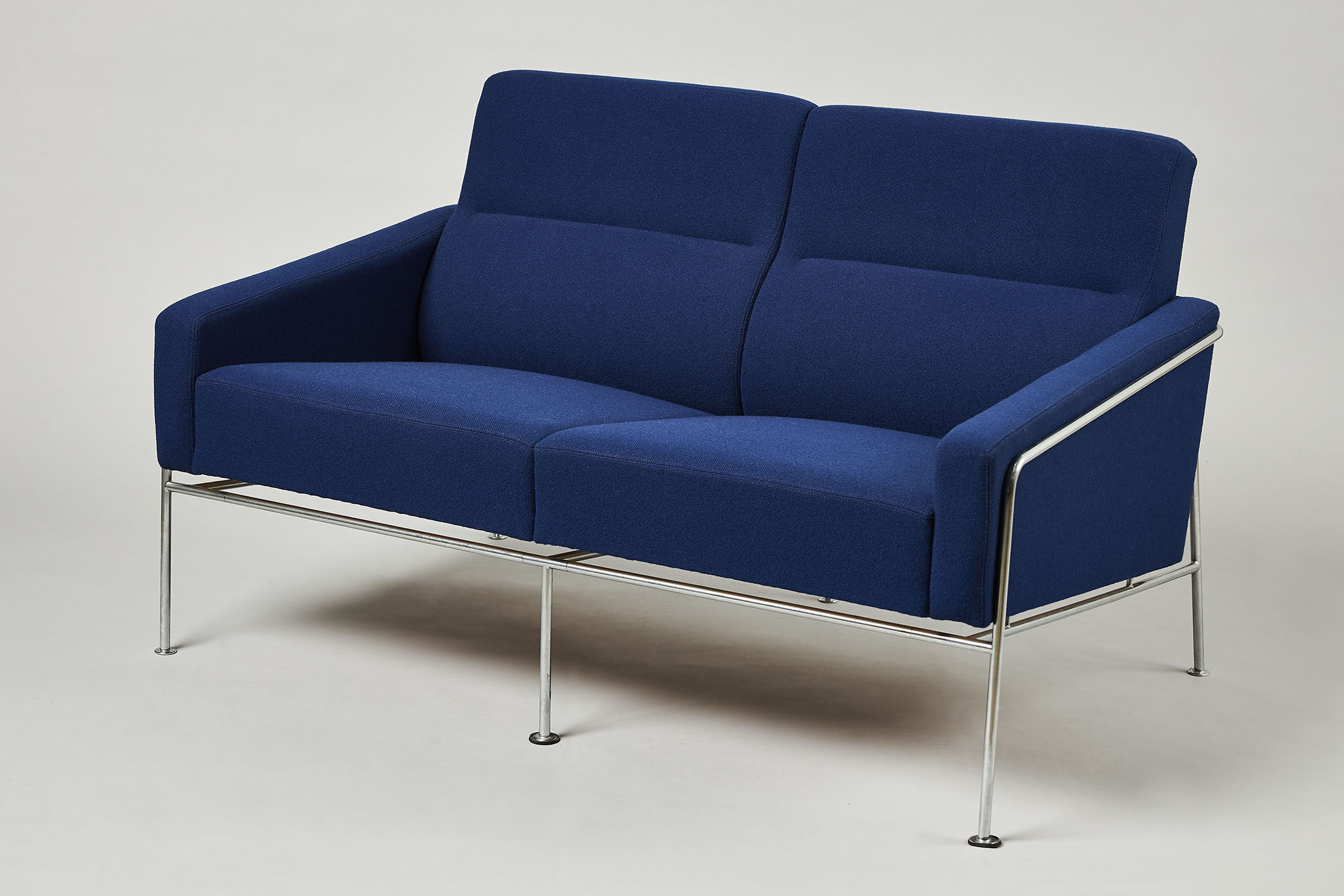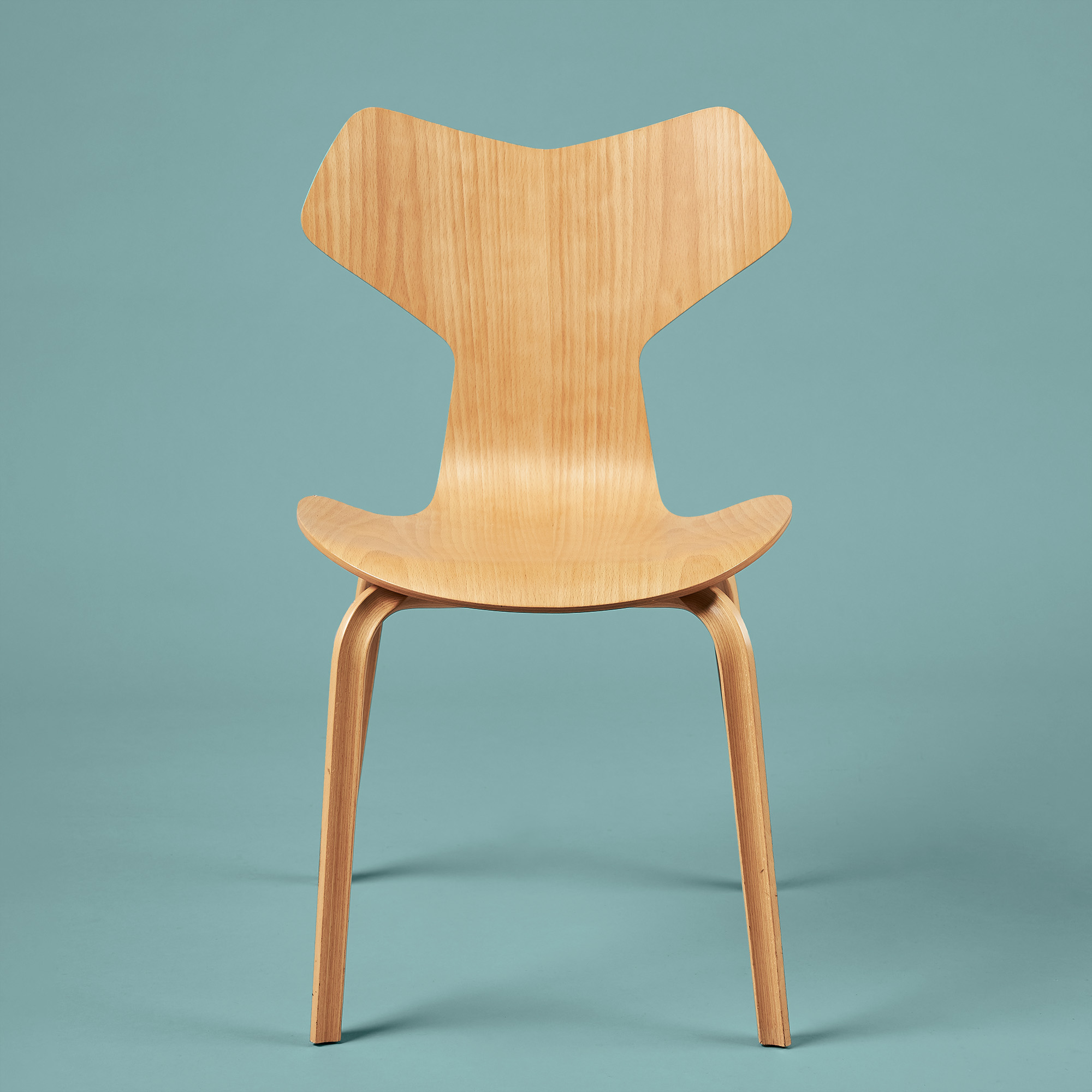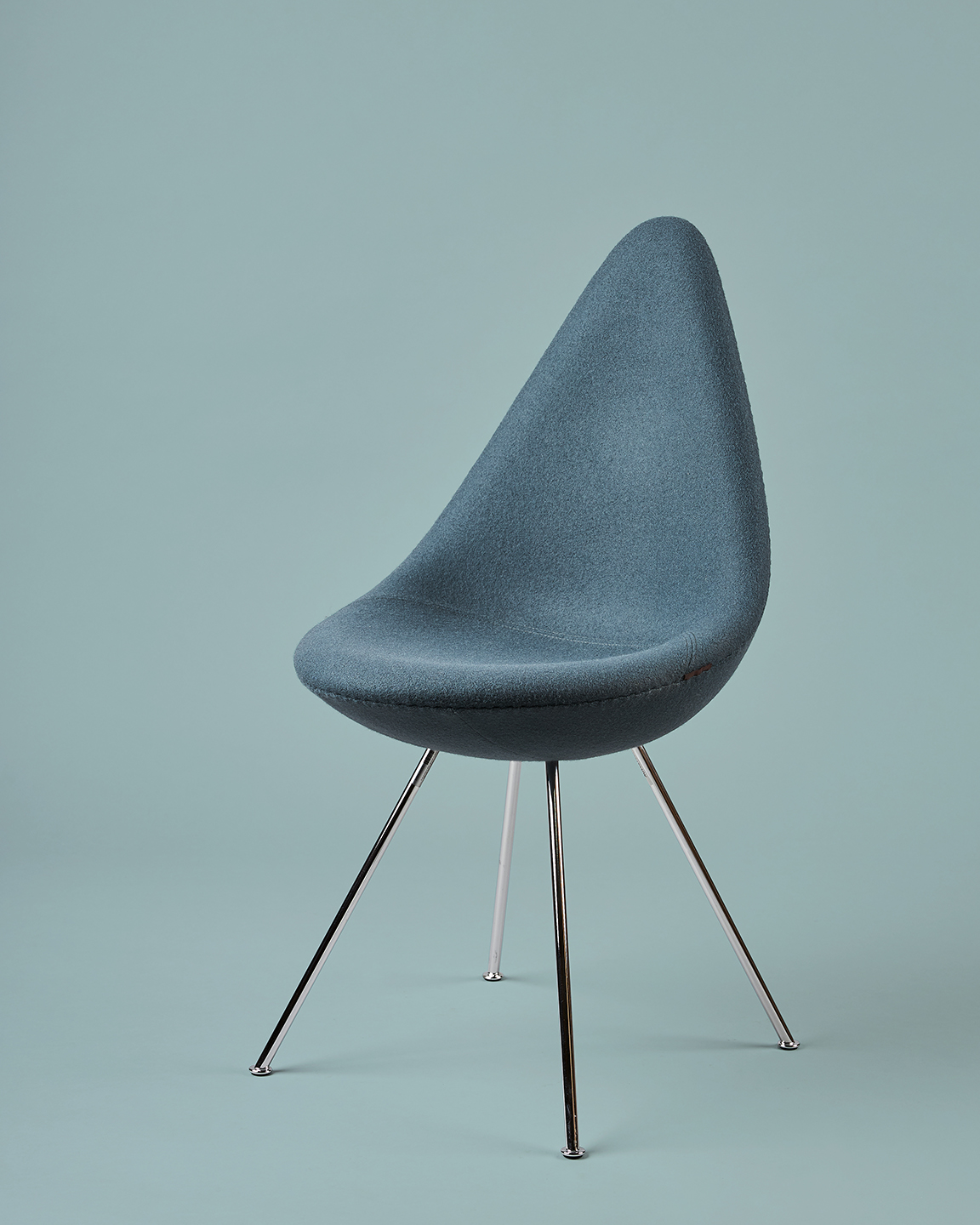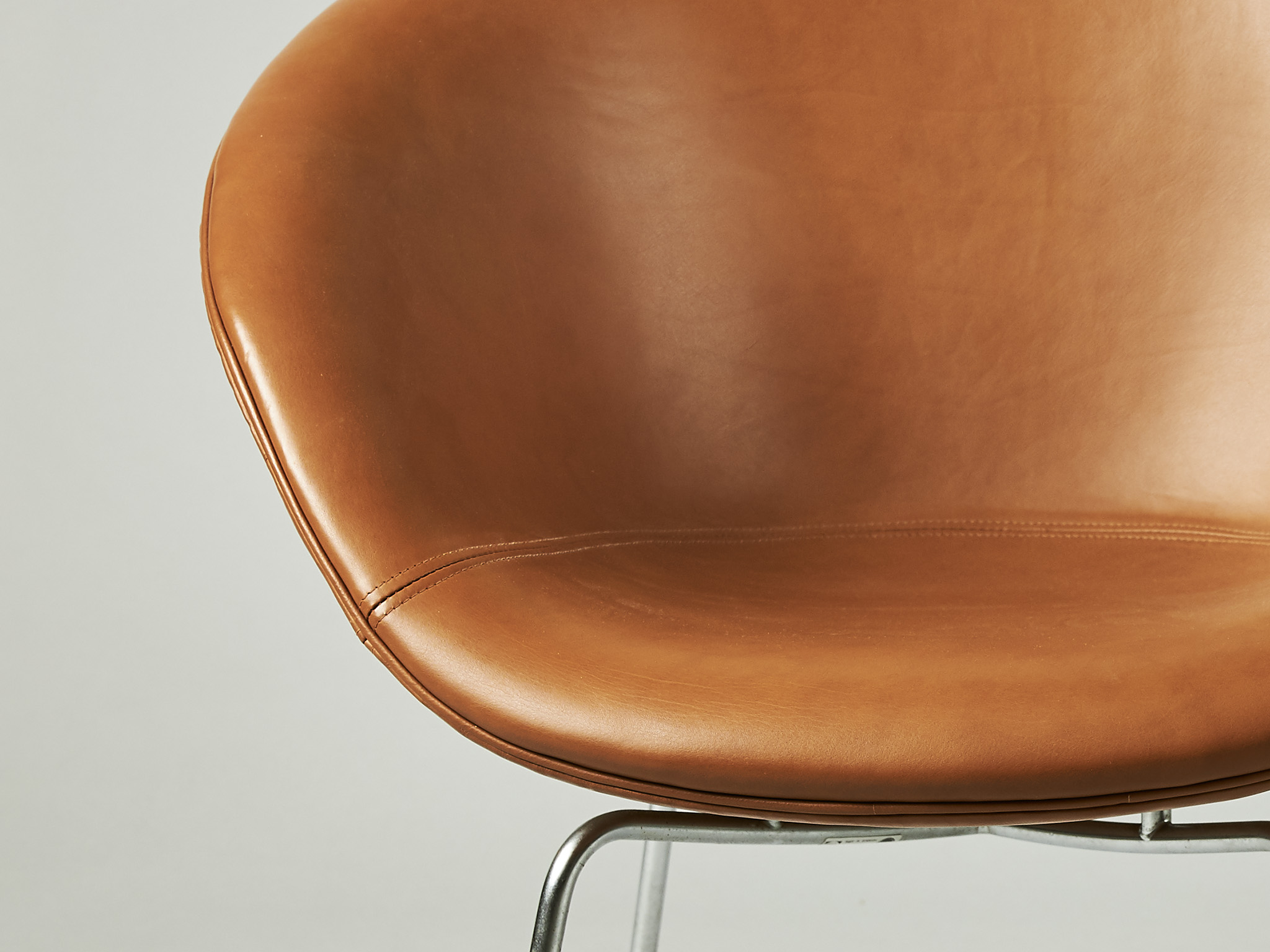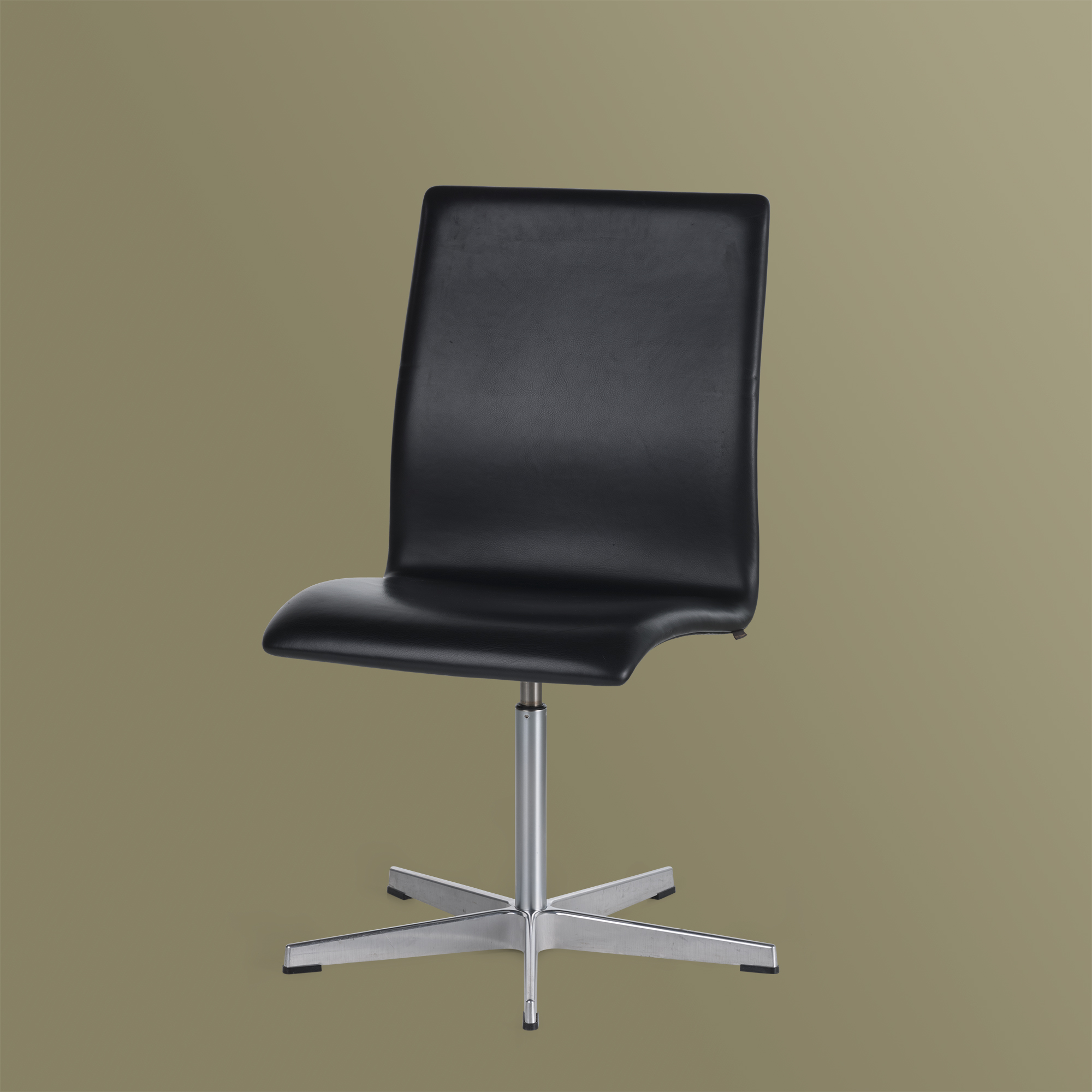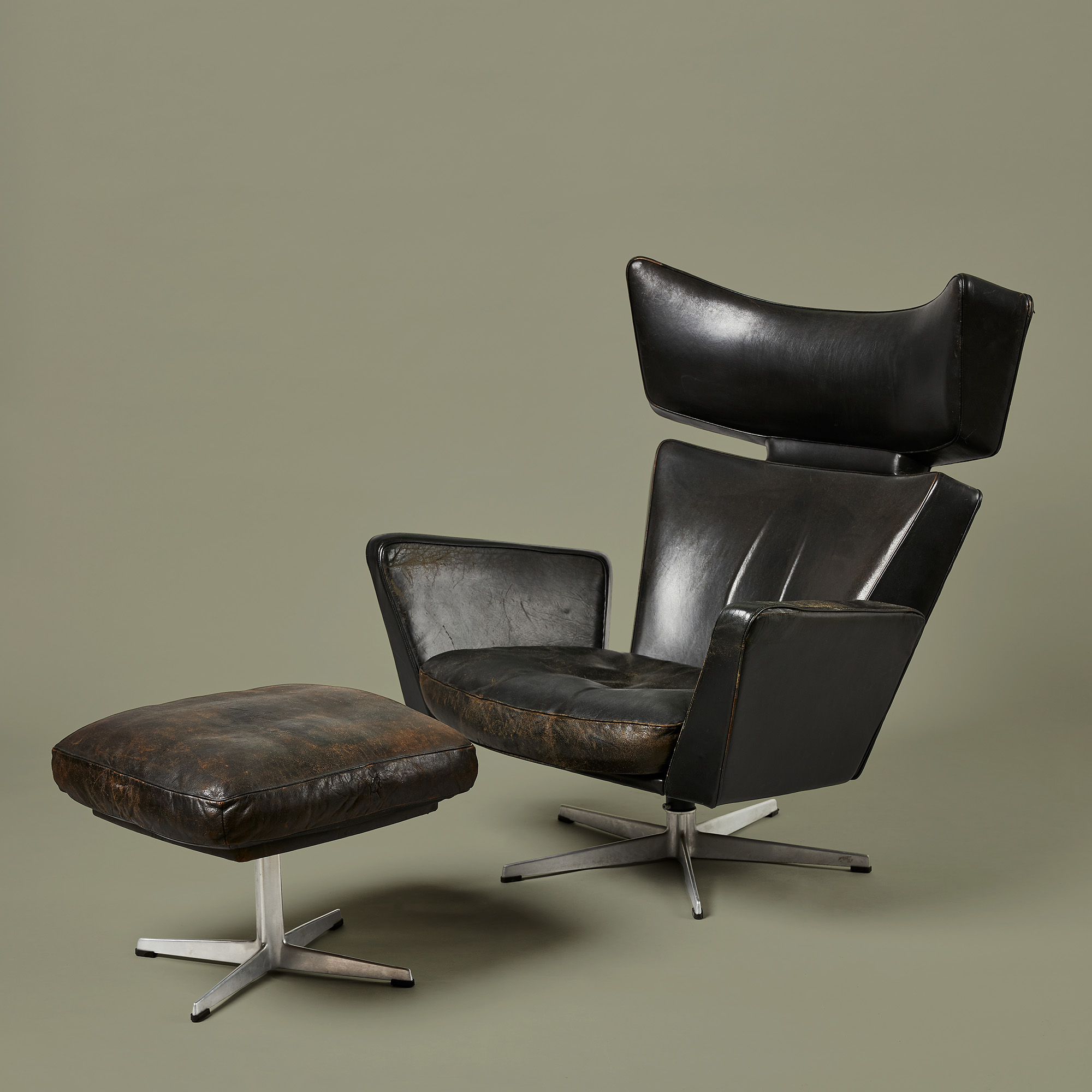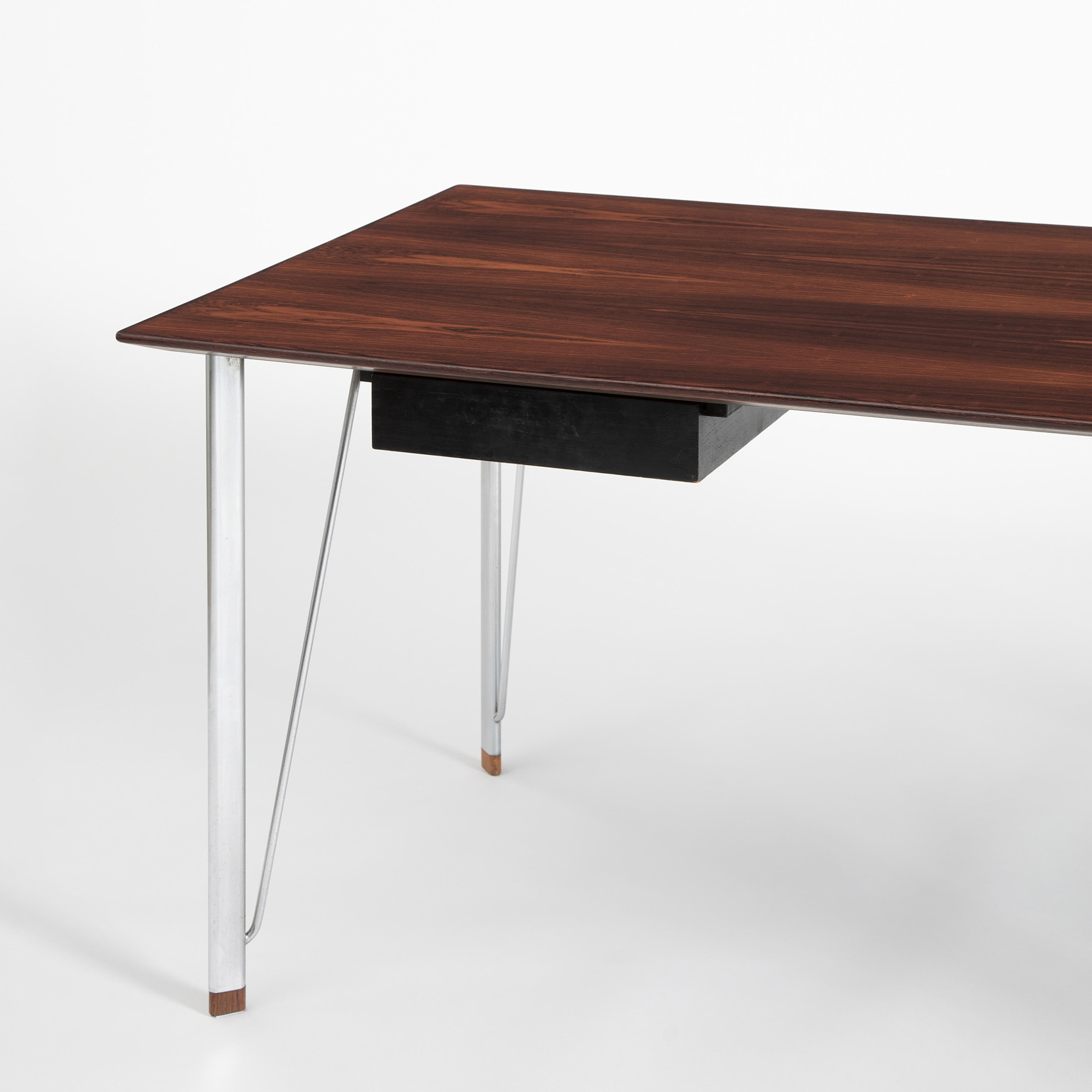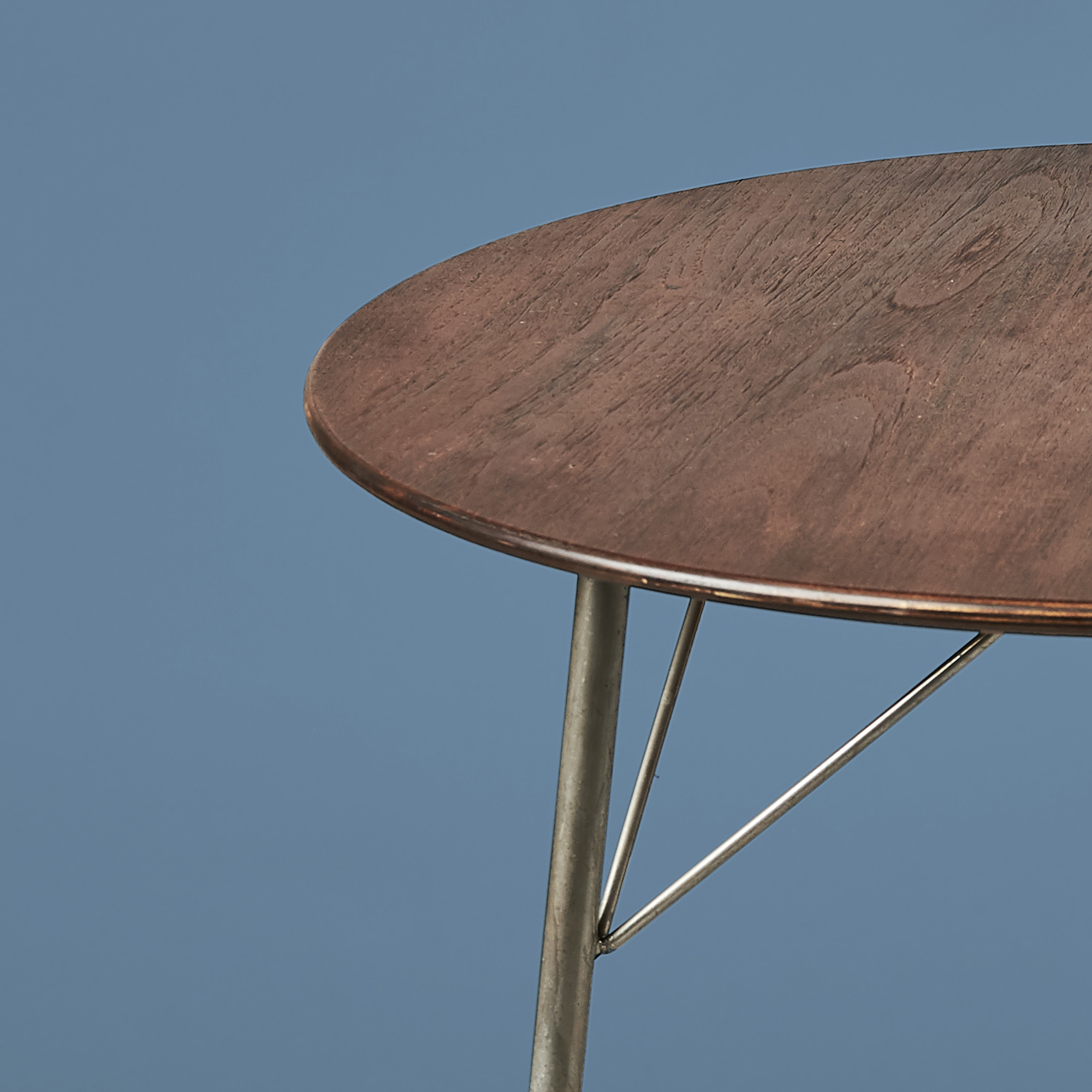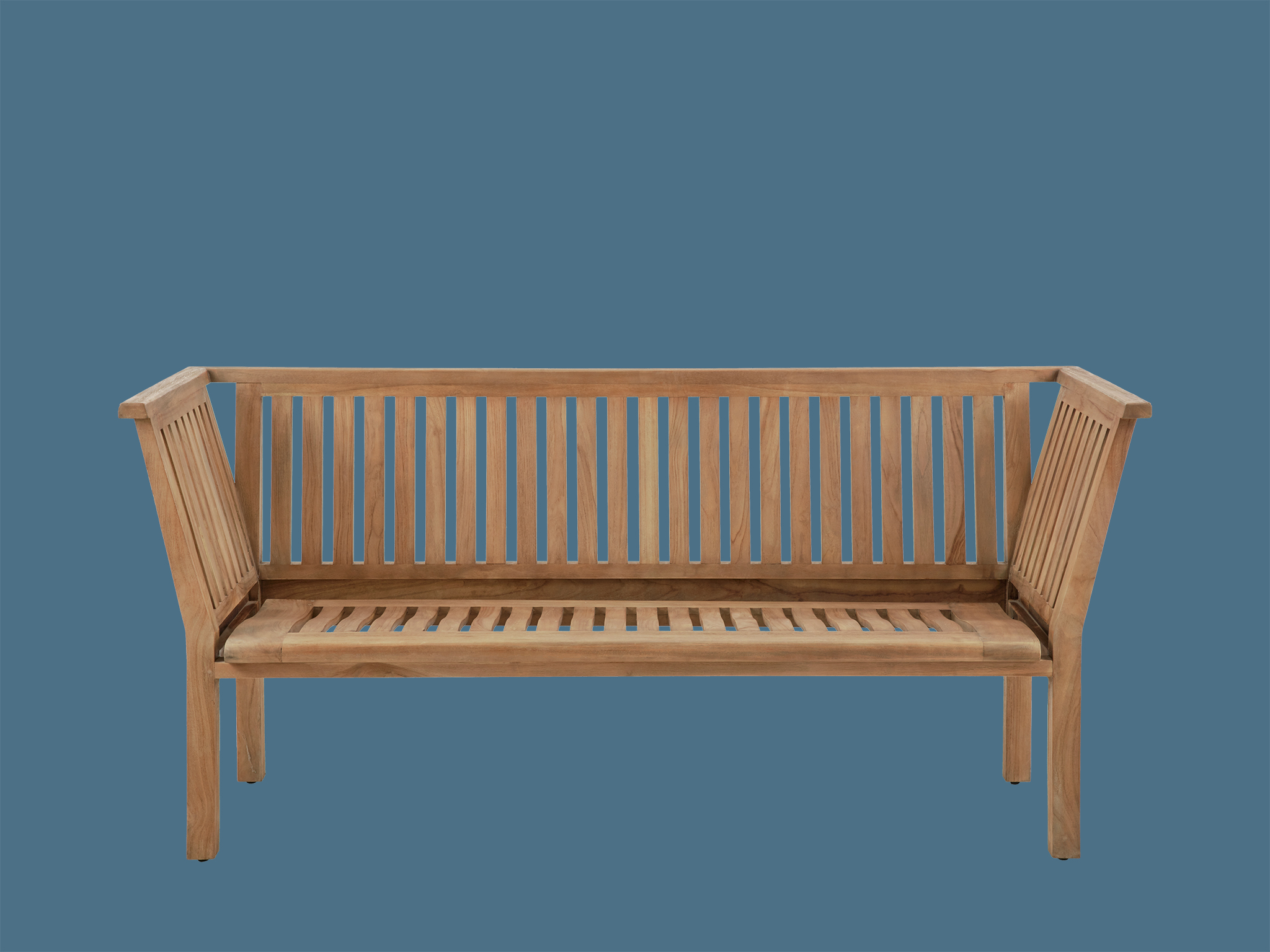The year 1952 also saw the launch of the Ant, Arne Jacobsen’s small lightweight chair with its pioneering expression and production process. The Ant and the furniture series for the American-Scandinavian Foundation were developed concurrently, and both projects reflect Arne Jacobsen’s experimentation with new materials and technological methods during the early 1950s with the goal of achieving greater design latitude and simpler, lighter constructions. In spring 1953, Arne Jacobsen exhibited the Society Table alongside the Ant at the Danish Museum of Art & Design (now Designmuseum Danmark), and in the press, the two designs were compared and characterized as, respectively, ‘Expensive and affordable luxury’. Both were praised for their beauty and elegance.
The Ant chair was developed for industrial mass production, and by now, millions of Ant chairs have been produced. By contrast, the Society Table was originally hand-made by a cabinetmaker in a very limited series. Until then, Arne Jacobsen’s designs had followed the classic Danish furniture tradition of hand-made cabinetmaker’s furniture, but the Society Table positions itself at the transition from exclusive and highly detailed cabinetmaking to a minimalist production-oriented aesthetic. Despite the desk’s key role in the story of Arne Jacobsen, and of 1950s Danish design in general, it remained quite unknown until 2018, when it was relaunched by the Danish furniture manufacturer Carl Hansen & Søn.
